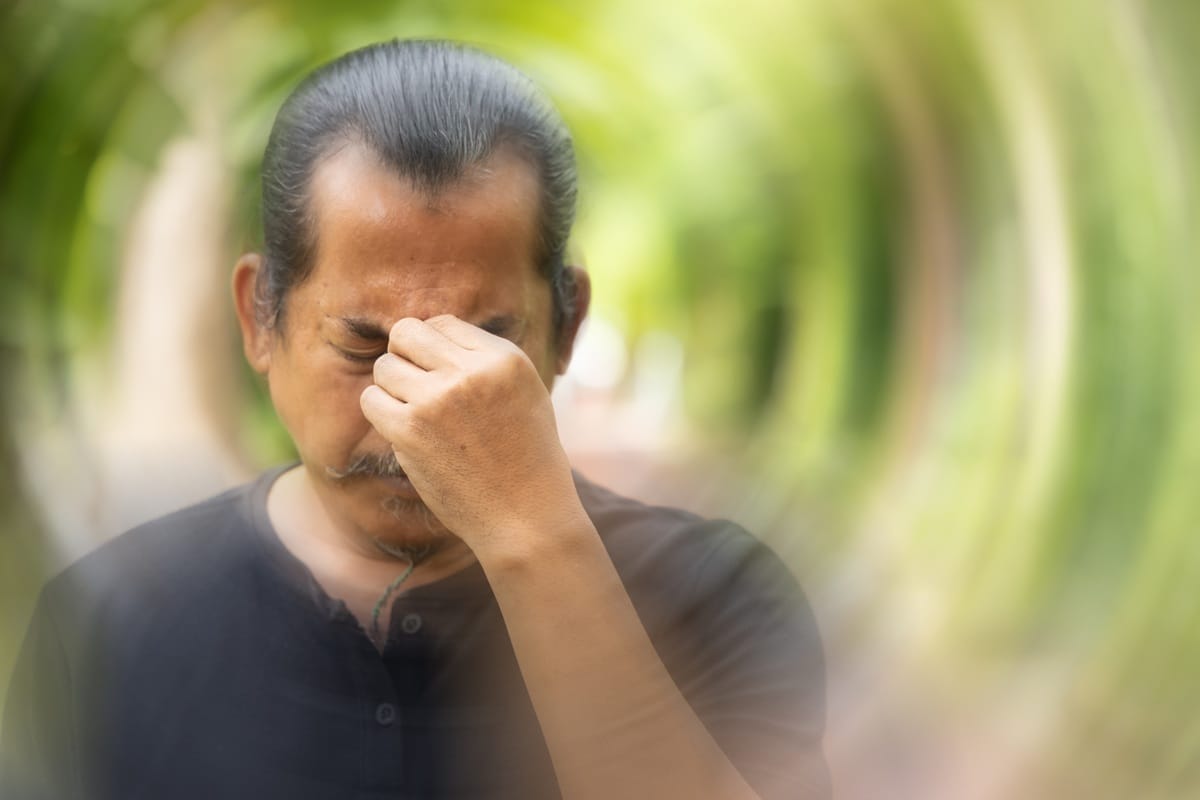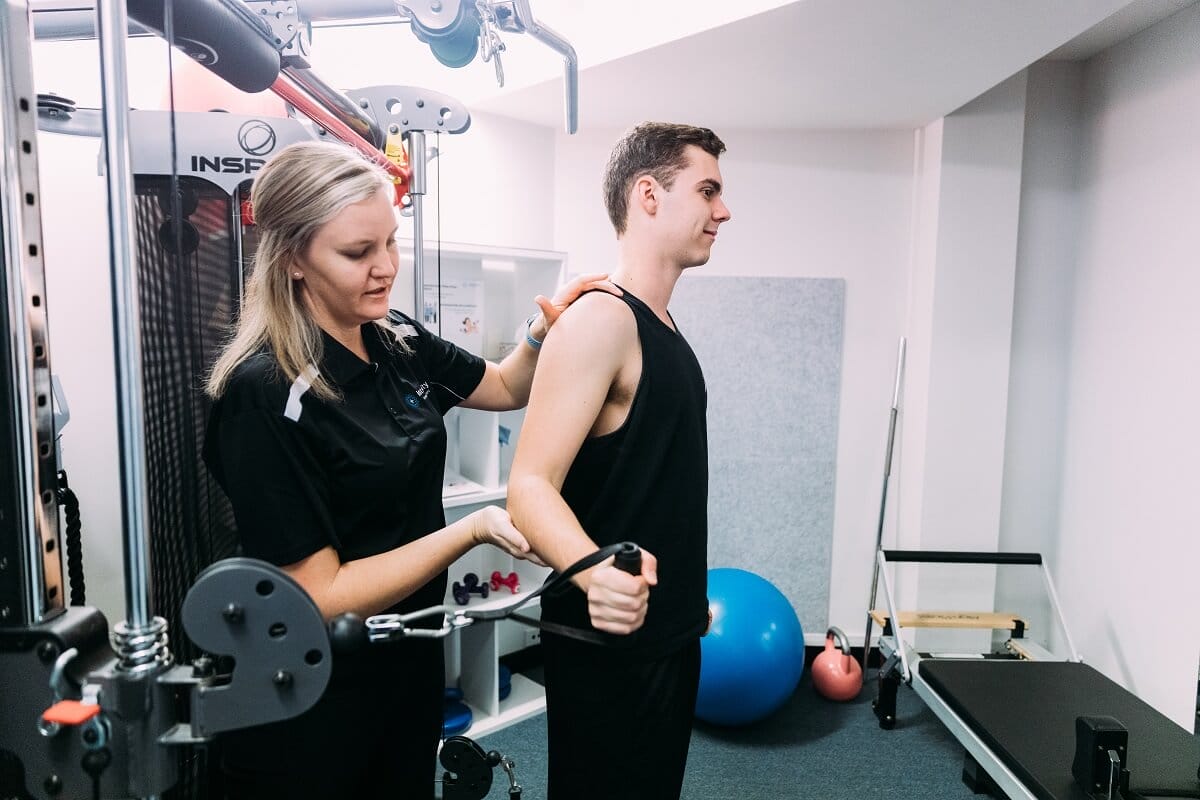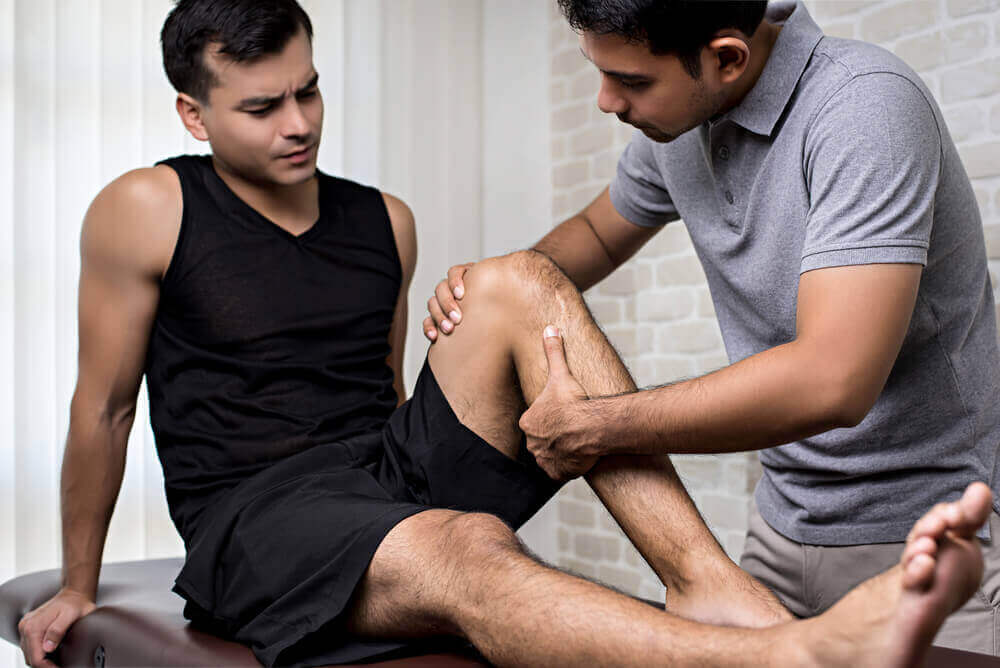
Sports injuries happen all the time. From backyard cricket to the AFL Grand Final, injury is no stranger in any sport – so knowing how to treat and prevent them is just as important as knowing the rules of the game. Even top athletes must deal with an occasional sprain or tear.
Whether it’s football or cricket, sports can often cause specific kinds of injury depending on the mechanics of the game such as the amount of body contact, speed, and other environmental factors.
Common sport injuries often occur when a player is fatigued or is involved with an unpredictable high impact situation such as a tackle or fall.
Top 10 Common Sport Injuries:
- Ankle Sprain
- Hamstring Sprain
- Groin Strain
- Knee Injuries
- Stress Fractures
- Shoulder Injuries
- Tennis Elbow
- Carpal Tunnel Syndrome
- Achilles Injuries
- Neck Injuries
1. Ankle Sprain: Causes And Symptoms
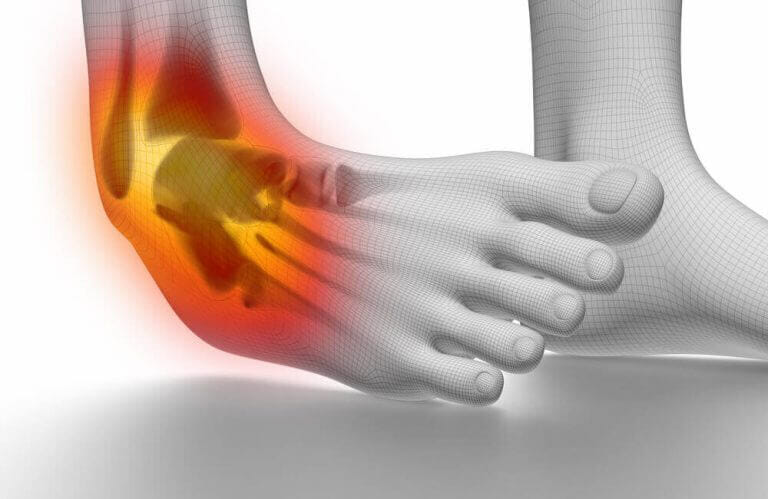
An ankle sprain occurs when there is tearing of the ligaments connecting the bones in the ankle. These ligaments stabilise the joint and when overstretched, may result in a sprain. Sports players are vulnerable to ankle sprains due to the stress placed on the joints during movements such as twisting, jumping, turning, and fast direction changes. More than 80% of ankle sprains happen when the foot twists inward affecting the ligaments on the outside of the ankle. The joint in this area is stabilised by three small ligaments, whereas the inside of the ankle joint is stabilised by a thick and strong ligament called the deltoid ligament. Sprains to the inside ligament account for less than 20% of injuries.
How To Treat Ankle Sprains
Sport injury treatment for a sprained ankle requires the RICE principle, rest, ice, compression, and elevation. This helps to reduce inflammation and protect the ankle from further damage. Many ankle sprains heal within two to six weeks, however, severe sprains can take up to 12 weeks of recovery. Rehabilitation for an ankle sprain may include stretching, strengthening, balance, and flexibility exercises. This can help to reduce the chance of the injury recurring. Your sports physio will determine whether bracing or taping the ankle is necessary.
Preventing Ankle Sprains
Keeping active will strengthen and condition your joints to withstand potential sprains. If you’re prone to ankle sprains you’ll want to speak to your sports physio about exercises that will make your joints more limber and accident-proof.
2. Hamstring Strain: Causes And Symptoms
Among the most common sport injuries is a hamstring strain. You’ll know you’ve injured your hamstring if you experience sudden pain, tenderness, or cramping in the back of your thigh. Athletes are particularly susceptible to hamstring strains as these muscles deliver power and speed. The main causes of a hamstring strain are overuse, weakness, poor stretching technique, or a lack of stretching. Hamstring strains are also often caused by an imbalance between the quadriceps and hamstring muscles or weakness in the gluteals.
Treating A Hamstring Injury
The initial treatment of a hamstring strain requires the RICE principle. Further sport injury treatment will vary depending on the severity. For those with a minor hamstring strain, stretching and strengthening exercises are often effective during recovery. Diagnosis of the severity of your hamstring strain should involve your physiotherapist as this will significantly change how the injury is managed.
How To Avoid Hamstring Injuries
Speak to any sports physio and they will tell you the importance of warming up properly before exercise. When it comes to protecting your hamstrings, it’s one of the best prevention methods. Maintaining a good strength and flexibility routine will also lower your chances of injury in the future.
3. Groin Strain
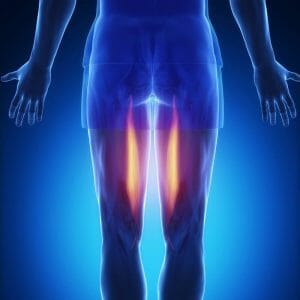
A groin strain is a tear to one of the groin muscles, usually one of the five hip adductor muscle groups. Although any one of these adductor muscle groups can be strained, the most common is the adductor longus. This injury usually occurs during high-speed activities such as sprinting, kicking, and sudden direction changes. Similar to other strains, a groin strain can be mild, moderate, or severe. Depending on the severity, a groin strain may cause pain, inflammation, muscle tightness, or trouble walking.
How To Treat A Groin Strain
Applying ice to the inside of the thigh to ease inflammation is the first step, taking off any pressure is also critical in easing the pain. Physiotherapy diagnosis, manual treatment and targeted exercises are a way to ensure your muscles heal properly.
Preventing Groin Strains
The easiest way to avoid straining your groin is by managing your training loading appropriately and ensuring you stay strong. Warming up this muscle group before exercising or playing sport will lower the chances of a strained groin.
4. Knee Injuries
Knee injuries are an extremely common sporting injury. Falls, collisions, sudden twists, and turns, excessive force, and overuse are all typical culprits when it comes to a knee injury. There can be numerous causes such as muscle strains, ligament sprains, tendon tears, cartilage tears, patella-femoral pain syndrome, or bone conditions such as arthritis.
One common sports-related knee injury is an ACL tear or sprain. The ACL is one of the major ligaments that stabilises the knee. This injury often happens when athletes are slowing down to cut or change directions. Usually, the ligaments on the inside of the knee are torn with an ACL injury.
Treating A Knee Injury
As with many other common sport injuries, damage to the knee will take time to heal. Treatment for a knee injury will depend on the causes and individual needs as specified by a professional – physio or sports doctor. Some of the specific sport injury treatments for a knee may include taping, stretching and strengthening exercises, massage, dry needling and mobilisation techniques. Occasionally severe knee injuries require surgery.
Preventing Knee Injuries
Wearing well-fitted, stable shoes, especially when playing a sport. This will greatly reduce the risk of falling, tripping or losing balance with change of direction. Make sure your body is strong and your overall balance is good. Avoid overtraining and keep up your stretches after exercise or intensive sport.
5. Stress Fractures
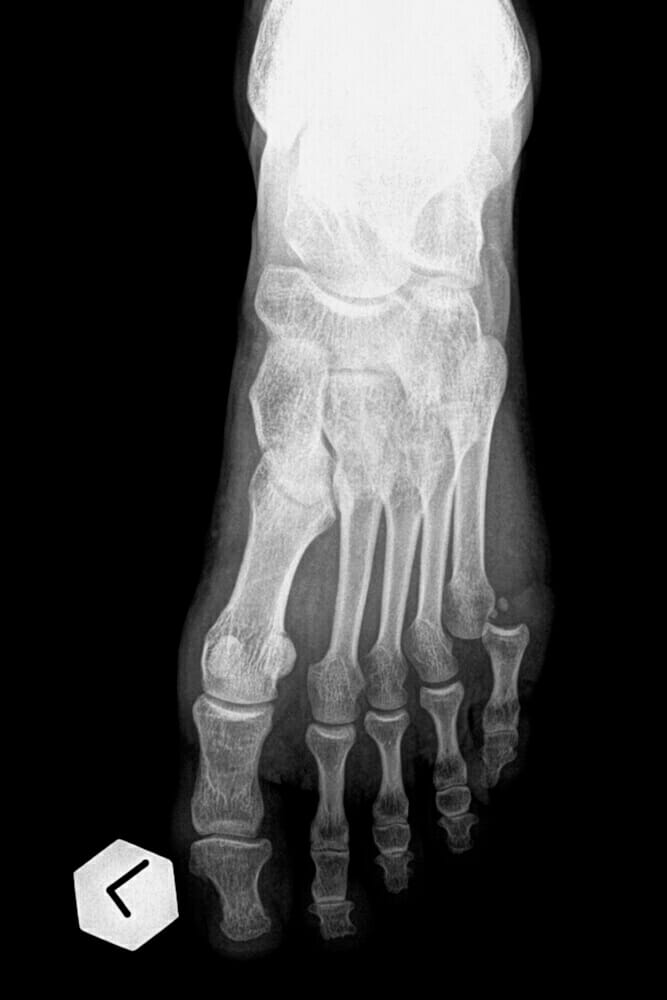
Another very common sporting injury is a stress fracture. Stress fractures are small cracks in the bone caused by repetitive force. One of the most common types of stress fracture occurs in the feet of runners. Stress fractures can also happen in conditions such as osteoporosis.
How To Treat Stress Fractures
Treatment for a stress fracture involves rest from the activity that caused the injury while remaining active in an activity that doesn’t cause pain. If the activity that caused the stress fracture is resumed too early, further fracturing can occur, extending the healing time.
Preventing Stress Fractures
There are a couple of different ways to ensure you keep your bones intact. Firstly, take gradual steps when increasing your training routine. Secondly, take care when changing to harder surfaces for your training, and monitor your discomfort levels. If you have osteoporosis, take more care, sudden increases in impact can be too much for your bone density. Lastly, keep your bones strong and healthy by maintaining the right nutrients and vitamin C levels.
6. Shoulder Injuries
The shoulder is extremely susceptible to several common sport injuries. Athletes and amateurs who play sports involving batting, throwing, or tackling are prone to injuring their shoulders. From dislocations, to fractures and rotator cuff injuries, the complex shoulder structure lends itself to painful complications.
Treating Shoulder Injuries
Treatment for shoulder injuries focuses on reducing pain and inflammation, increasing mobility and range of motion, while maintaining stability in surrounding muscle groups. Sports injury treatment for a shoulder may include taping, dry needling, manual therapy, and specific strengthening exercises.
How To Prevent A Shoulder Injury
While there’s no magic bullet for a shoulder injury, there are ways to minimise the risks of dislocation, muscle strain, or fractures. Exercising the right way is important in keeping your shoulder strong and resilient. Stretching and warming up before exercise will also work to minimise your chances of injuring your shoulder.
7. Tennis Elbow
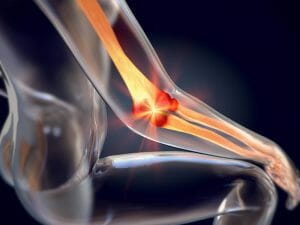
Tennis elbow doesn’t just occur in tennis players. It affects many athletes and sporting professionals who grip objects for prolonged periods with poor and repetitive techniques. The common sport injury affects the muscles that allow the wrist and fingers to extend. The injury usually occurs on the outside of the elbow, just on the bony bump where the muscles attach.
Treating Tennis Elbow
All treatments aim to improve function and reduce pain. Some physio treatments include manual therapy, education, strengthening, stretching exercises, braces, and sports-specific rehabilitation.
Ways To Prevent Tennis Elbow
The best way to prevent tennis elbow is to moderate the activity that is causing the pain and consider changes to your technique and equipment to optimise loading. If you’re not sure what to do, see your physiotherapist. Learning new ways to achieve the same or better results without causing pain will be better for your body in the long term. Avoid unnecessary stress to your tendons and keep repetitive motions to a minimum.
8. Carpal Tunnel Syndrome
Carpal tunnel syndrome is a painful condition in the hand caused by pressure on the median nerve which runs through the wrist. Repetitive hand motions can contribute to Carpal Tunnel Syndrome which puts pressure on the nerve resulting in compression. Symptoms are usually pain, numbness, and pins and needles.
How To Treat Carpal Tunnel Syndrome
Early treatment is always most effective as the condition usually gets worse over time. There are a couple of ways to combat this common sport injury. Methods include wrist braces, physiotherapy, and in severe cases surgery may be necessary.
Preventing Carpal Tunnel Syndrome
Reducing the chances of getting Carpal Tunnel Syndrome will involve monitoring your hands and forearm, reducing and relaxing your grip on objects wherever possible, and taking short, intentional breaks between strenuous activities.
9. Achilles Injury
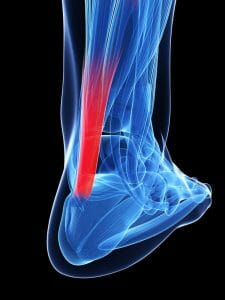
The Achilles is a large tendon located at the back of the ankle which extends from the calf to the heel. The achilles tendon connects the heel to the leg muscles and allows the strength to push off during running and walking.
Among the most common sport injuries, this is one of the most debilitating and is caused by a tearing or rupturing of the tendon. This often happens due to an excessive load on the tendon, incorrect footwear, or a sudden increase in intensity and stress.
Treating An Achilles Injury
Sport injury treatment for the Achilles tendon usually requires immediate treatment using the RICE principle. Recovery and treatment are best coordinated by professional physiotherapists. Continued activity following an injury can result in further damage and increased recovery time. Depending on the severity, surgical treatment options may be necessary.
Preventing Achilles Tendon Injuries
Avoid sudden and excessive loads and strain on the lower leg and heel. Stretching before exercise or playing sport will also help reduce the risk of injury. Strength training such as calf raises will also work to protect your lower leg from potential injury.
10. Neck Injuries
Sport-related neck injuries can range from mild to severe. Some of these injuries include neck sprains or strains through to even neck fractures and cervical spinal cord injuries. A neck sprain or strain is one of the more common sport injuries and is one of the fastest to heal and rehabilitate. The majority of the time this is related to the joints, muscles, and ligaments. This can occur from high-speed injuries, muscle fatigue, and excessive loads. A neck injury may cause pain and stiffness, as well as muscle tightness and tenderness.
Treating Neck Injuries
Treatments range from ice, a range of physiotherapy interventions, neck braces and in severe cases, surgery. Common sporting injuries like neck sprains or strains can heal with physiotherapy. Once recovery is underway, strength training such as weights and pulleys are an effective rehabilitation tool. This should always be done with the assistance of a qualified physiotherapist.
Best Ways To Prevent Neck Injuries
Avoiding high-speed activities and high impact collisions during sport or exercise. Helmets and padded head-gear are effective in preventing some forms of neck injury as are proper training exercises and stretching routines.
Book Your Consultation Today
Sports Physio South Perth is here to help you recover. Book your consultation today and get back to doing what you love.


